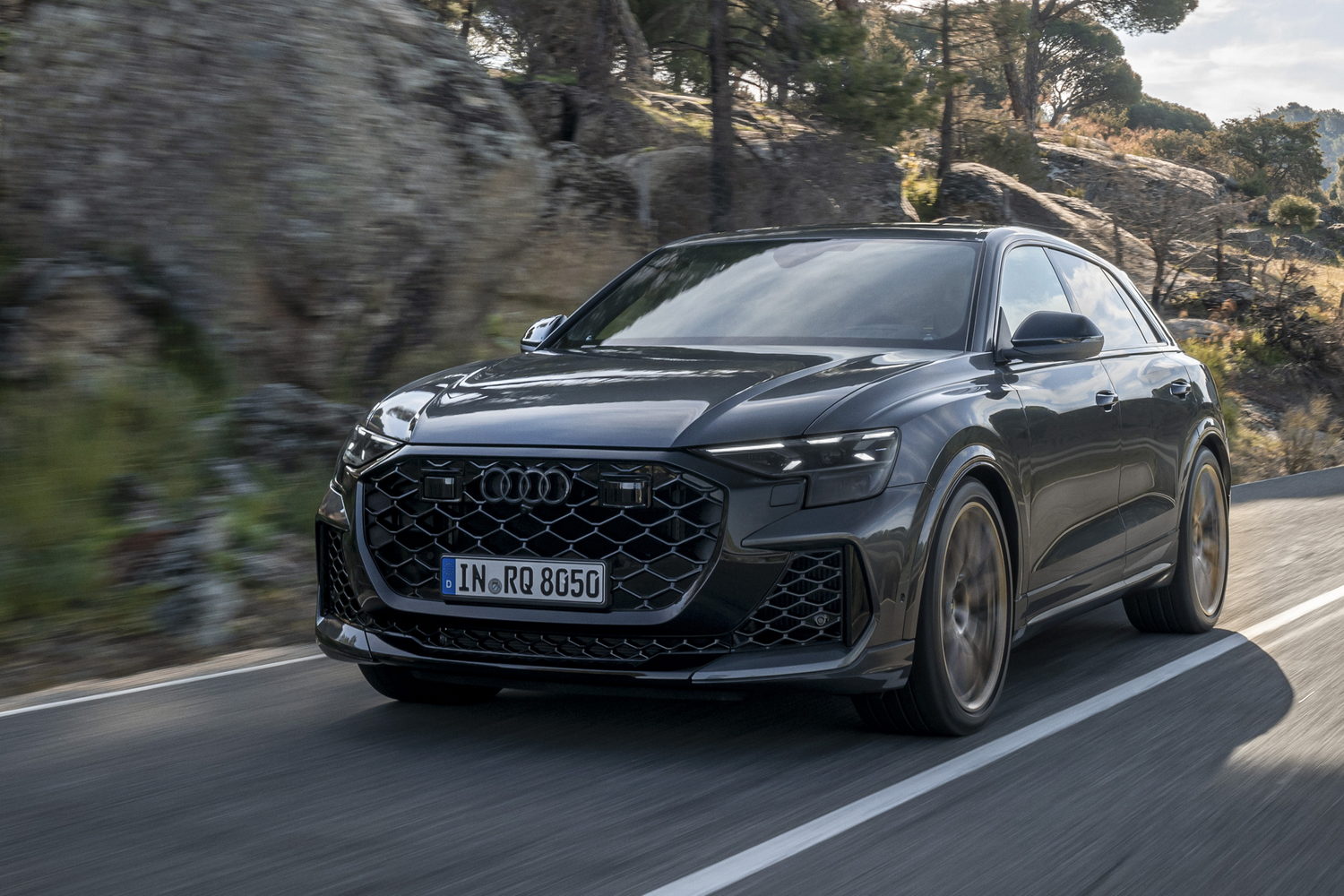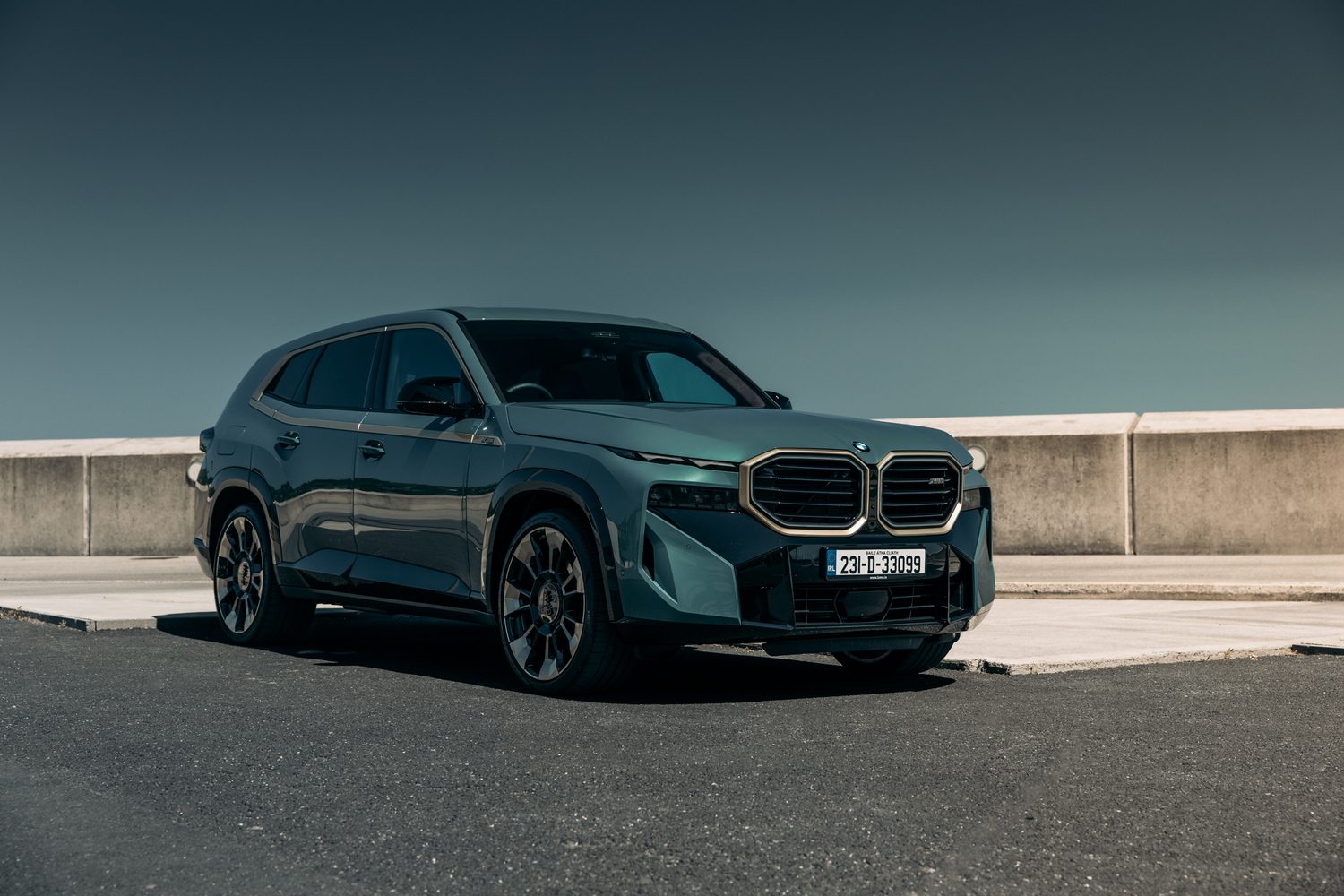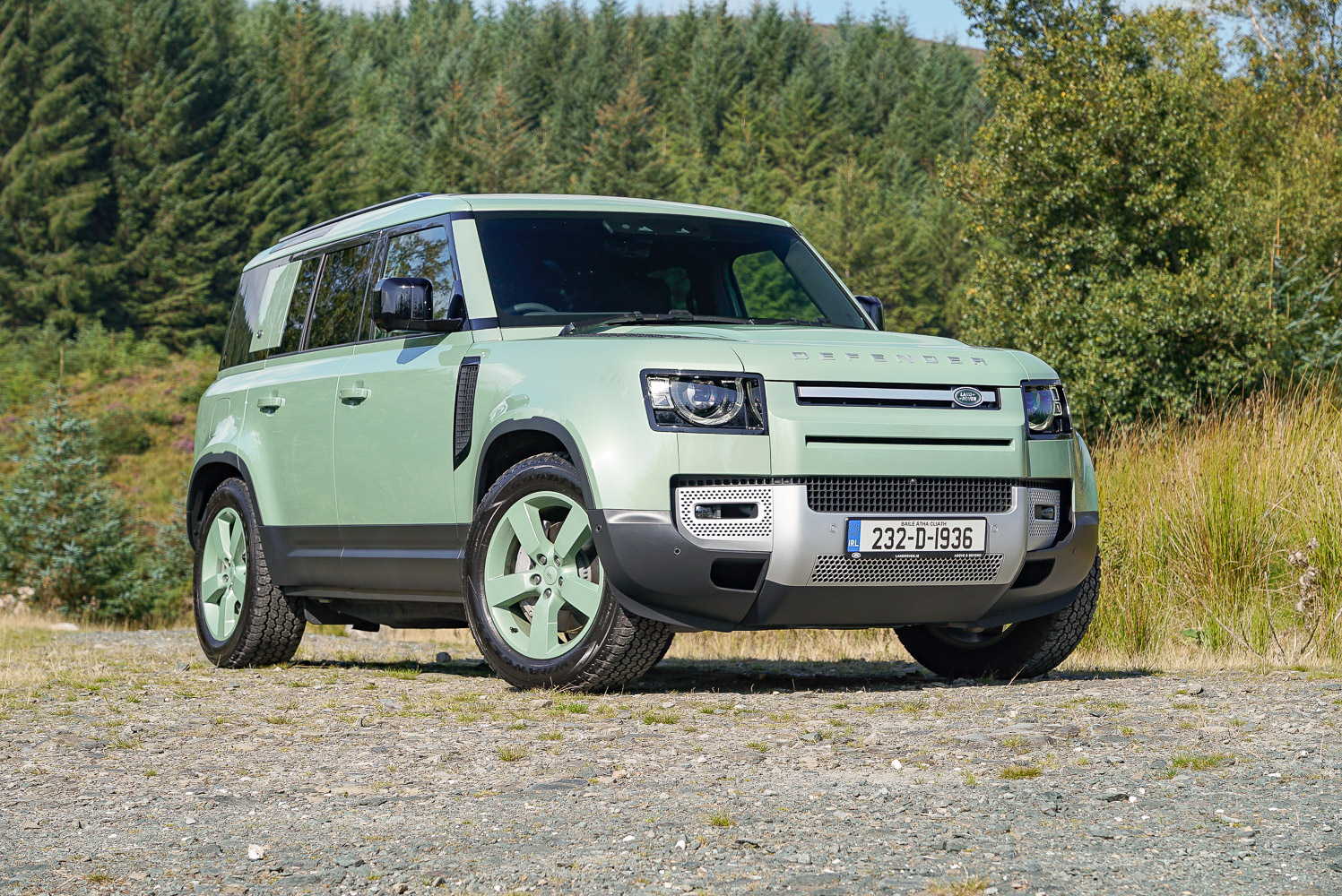While the Mercedes G-Class can trace its roots back to the practically designed original G-Wagen, the current car is more a status symbol than it is a car to be used for serious workhorse duties. That point is emphasised somewhat by the G-Class’s incredibly high pricing on the Irish market. Fans of the boxy G-Wagen styling must have hoped that the addition of an electric powertrain to the lineup would make the big SUV more affordable, but it barely has, and instead Mercedes set out to create an EV that impresses with AMG-like performance and a unique set of off-road talents, all wrapped up in the legendary shape.
The first electric variant of the G-Class is called the ‘G 580 with EQ Technology’ and our first chance to get behind its wheel was at the annual Pasadena test-drive event as part of our World Car Awards jury duties. We didn’t have the opportunity to put the G-Wagen to the test off the beaten track this time around, but then again, how many owners will?

How big is the electric Mercedes G-Class?
As you can probably tell from the more-or-less unchanged exterior styling, the electric model is the same size as any other in the G-Class lineup give or take a few mm, and while its square-jawed styling makes it look like a massive vehicle, it may surprise you to learn that it’s smaller than the Mercedes GLE SUV, and on a shorter wheelbase, though at nearly two metres tall the G-Wagen is considerably taller than that car, giving it unique proportions. Land Rover’s Defender 110 is a similar height, but that’s visually balanced by more length. For reference, the figures for the G-Class are:
Overall length: 4,624mm
Overall width: 1,931mm (excluding the door mirrors)
Overall height: 1,986mm
Wheelbase: 2,890mm

Although the wheelbase isn’t excessively long, the G 580’s turning circle is a noticeably wide 13.6 metres, but the stat that stands out for us is the mass. This car weighs in at a seriously chunky 3,085kg, which is some 500kg more than the diesel-engined G 450 d, and worryingly close to the 3,500kg limit for those with normal car driving licences (category B) to legally take the wheel of. That means you can’t use it to tow a heavy load without upgrading your licence as the maximum payload is 415kg. As alluded to in our introduction, many buyers won’t care about such practicalities, but it’s good to be aware of the limitations.
A look inside the electric Mercedes G-Class
Even getting into the G-Class is an occasion. The door handles are old-school in their design and operation, and you really need to climb up into the cabin before pulling the door shut with a satisfying “clunk”. The theme of upright design continues inside, though contemporary Mercedes style, switchgear and technology are present and correct. There’s a high sense of quality and an excellent view out in all directions.
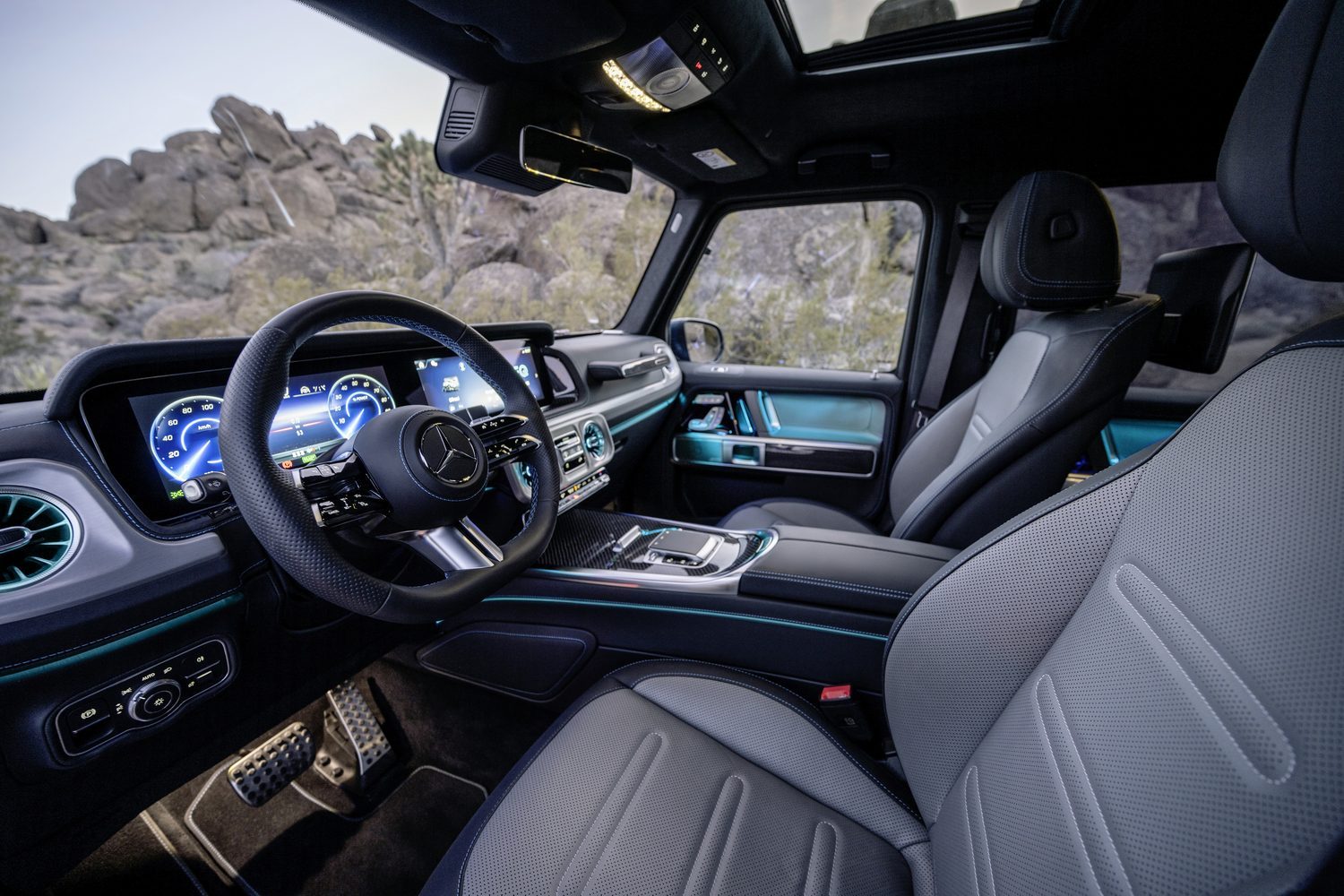
The indicators atop the front wings are always visible, reminding you what you’re driving, while the front-seat passenger gets a massive grab handle on the dashboard. There you’ll see myriad controls for going off-road (more of which in a moment) alongside a dual-screen setup with digital instruments and a central touchscreen.
Up front, there’s plenty of room in all directions, but the rear legroom is curiously cosy for such a large vehicle. At least there’s a big boot behind, and the charge cable is kept externally in a box that looks a little like it should be holding the spare wheel.
The electric Mercedes G-Class’s on-board technology
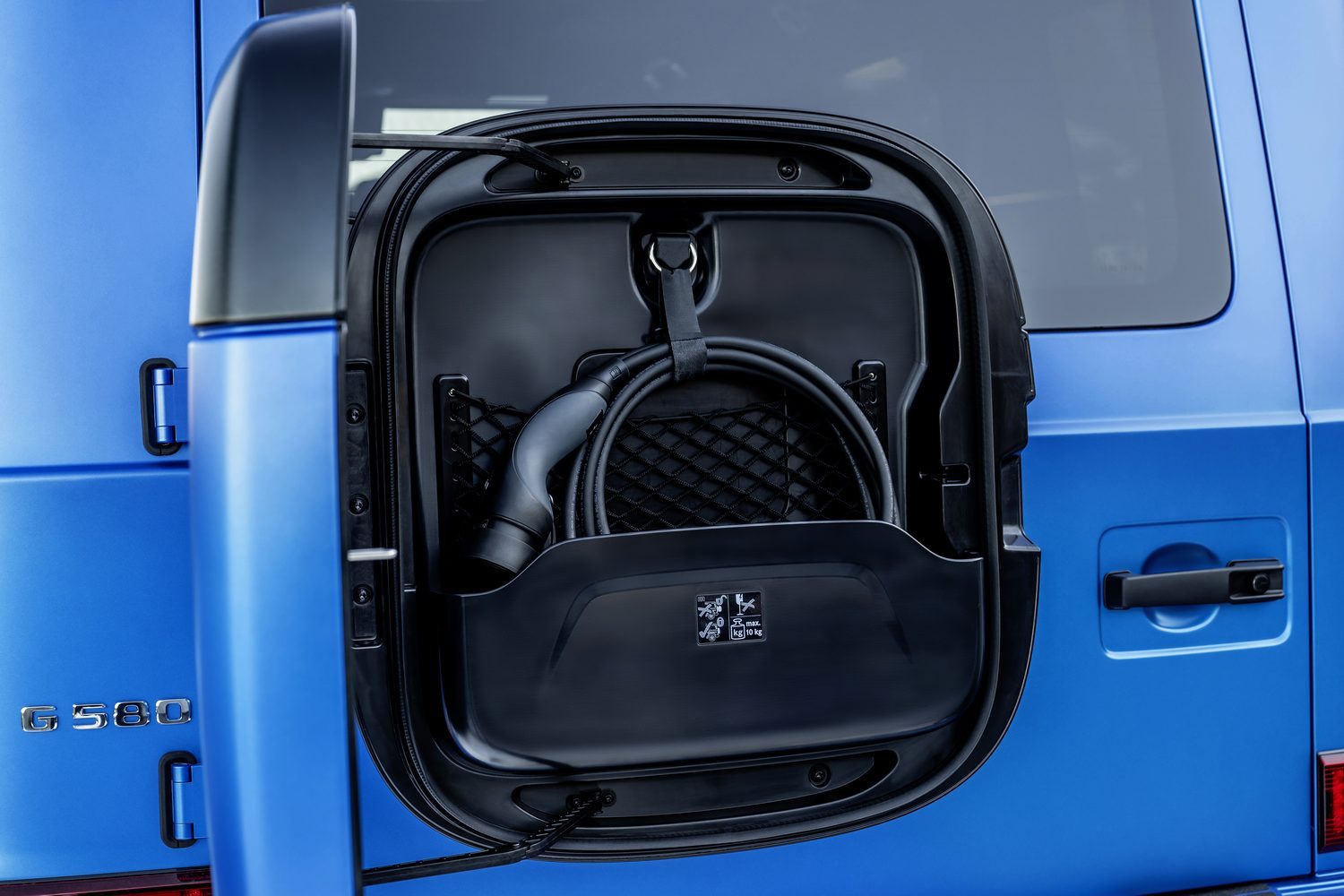
Uniquely, the G 580 has four electric motors, each driving a single wheel. This allows for some eye-catching off-road trickery without any need for traditional locking differentials.
We mentioned the poor turning circle above, but in fact this can be improved in an off-road situation using the built-in “G-Steering” function, usable only in the Rock drive mode with the low-range gear reduction switched on. This makes use of the individual motors to rotate the car around an inside rear wheel and could be useful on tricky terrain.
Of dubious use, but undoubtedly a crowd-pleaser, is the related G-Turn function - or the “tank turn” as it is referred to. Again, this can only be activated when using the Rock driving mode, but the car can spin around on its own length by rotating the wheels on the right and left sides of the vehicle in opposite directions. Once you figure out how to do it, it’s quite easy, and the driver chooses the direction of rotation using the paddles behind the steering wheel while holding the accelerator pedal down. It’s best kept to loose surfaces if you don’t want to ruin your tyres and the mechanicals, and the system only allows two full rotations of the car before resetting in any case.
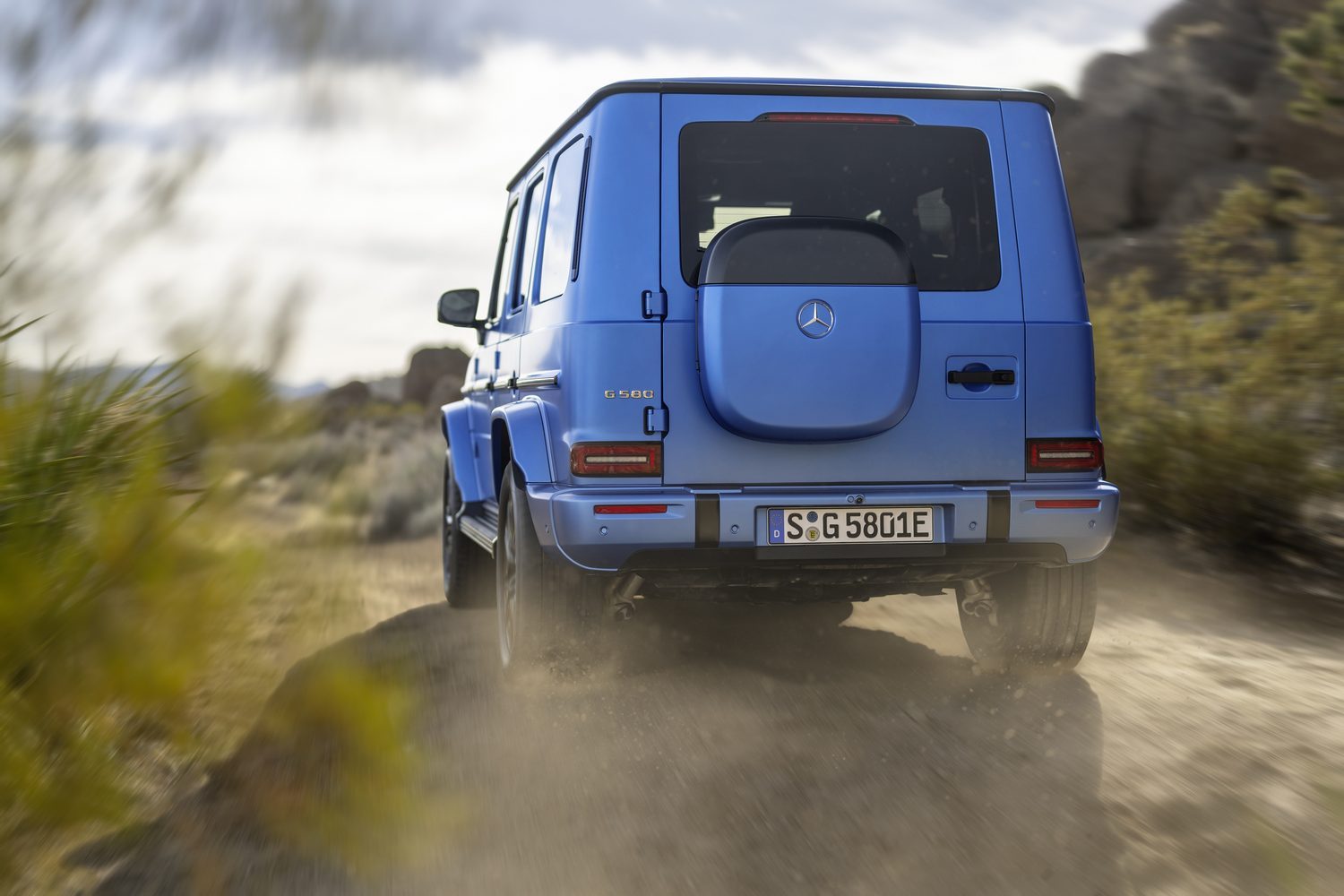
How many child seats can I fit in the electric Mercedes G-Class?
There are ISOFIX mounting points on the outer two rear seats and more space between the seatbelt buckles on the middle seat than in most cars so we wouldn’t rule out fitting in three car seats (so long as the middle one just uses the seatbelt). If that interests you, make sure you try it out for size using your own seats before you commit.
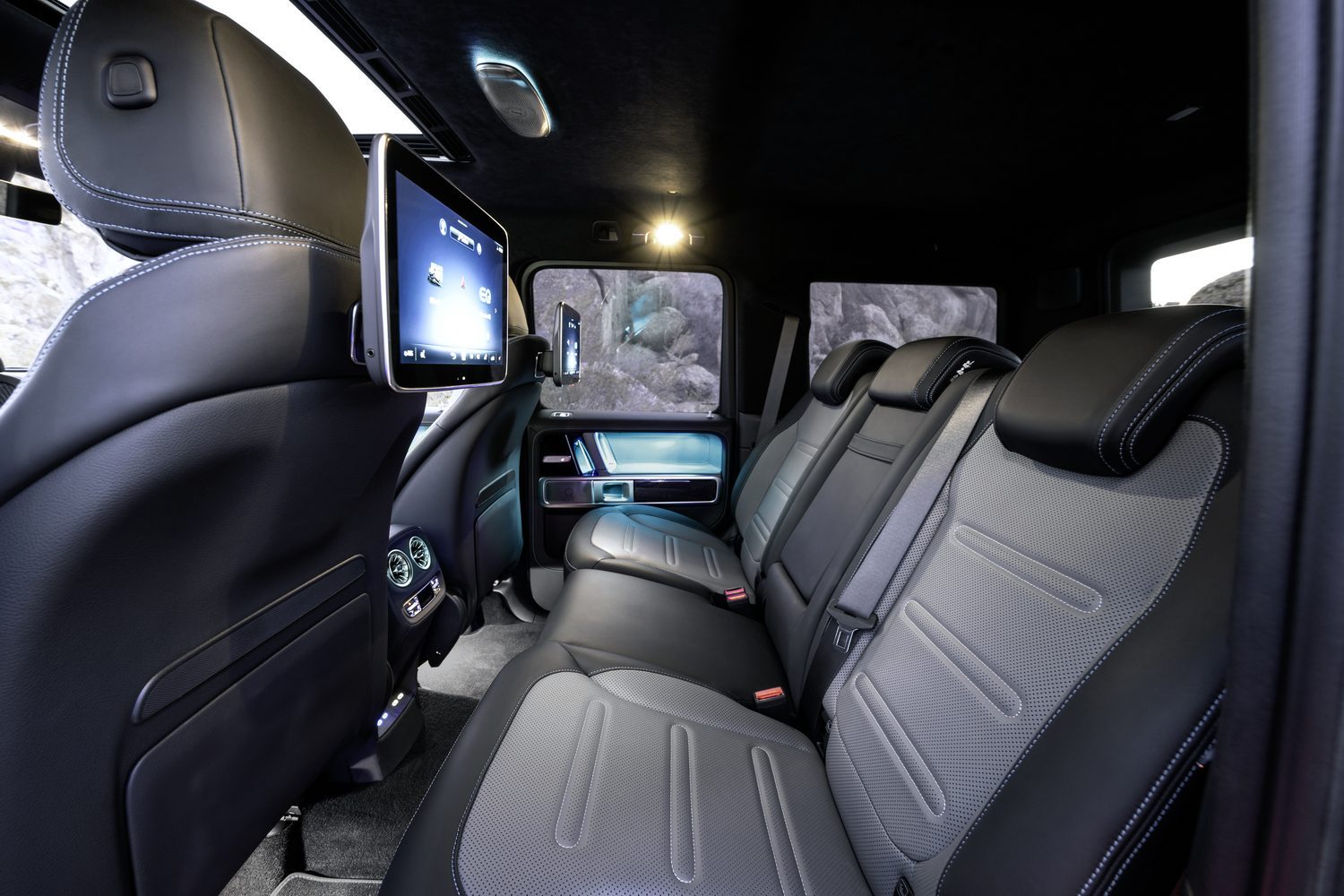
Driving the electric Mercedes G-Class
Those expecting the electric powertrain to transform the relatively anachronistic on-road manners of the G-Wagen will be disappointed, as it rides, handles and steers in a remarkably similar way to its siblings. That is to say it can cling on perfectly well if needs be, but it never feels comfortable at anything other than a sedate pace.
And as you can see from the tech specs, the G 580 is capable of anything other than a sedate pace thanks to its four electric motors producing totals of up to 587hp and 1,164Nm. That latter figure in particular explains how this three-tonne behemoth can get to 100km/h from rest in just 4.7 seconds. The straight-line speed is amusing, but it won’t be surprising to anyone used to the AMG versions of the G-Class, and it comes without the interest of a proper V8 soundtrack.

For on-road driving there are Normal and Sport settings and while the latter does help a little with body control in the corners, thanks to air suspension and adaptive damping, the G-Class just isn’t a rewarding car to test the limits in. Much better to amble around and enjoy the effortless acceleration from time to time when required instead. Which makes us wonder why bother giving this car so much performance.
Perhaps it starts to make more sense if you take it off the beaten track.
As mentioned, we didn’t have the opportunity to try that, and nor did we get to test how close the G 580 gets to its official range values on a charge. Over 400km seems achievable, as you’d hope given the size of the battery pack. Thankfully, this car can charge up rapidly from fast DC chargers, at up to 200kW.
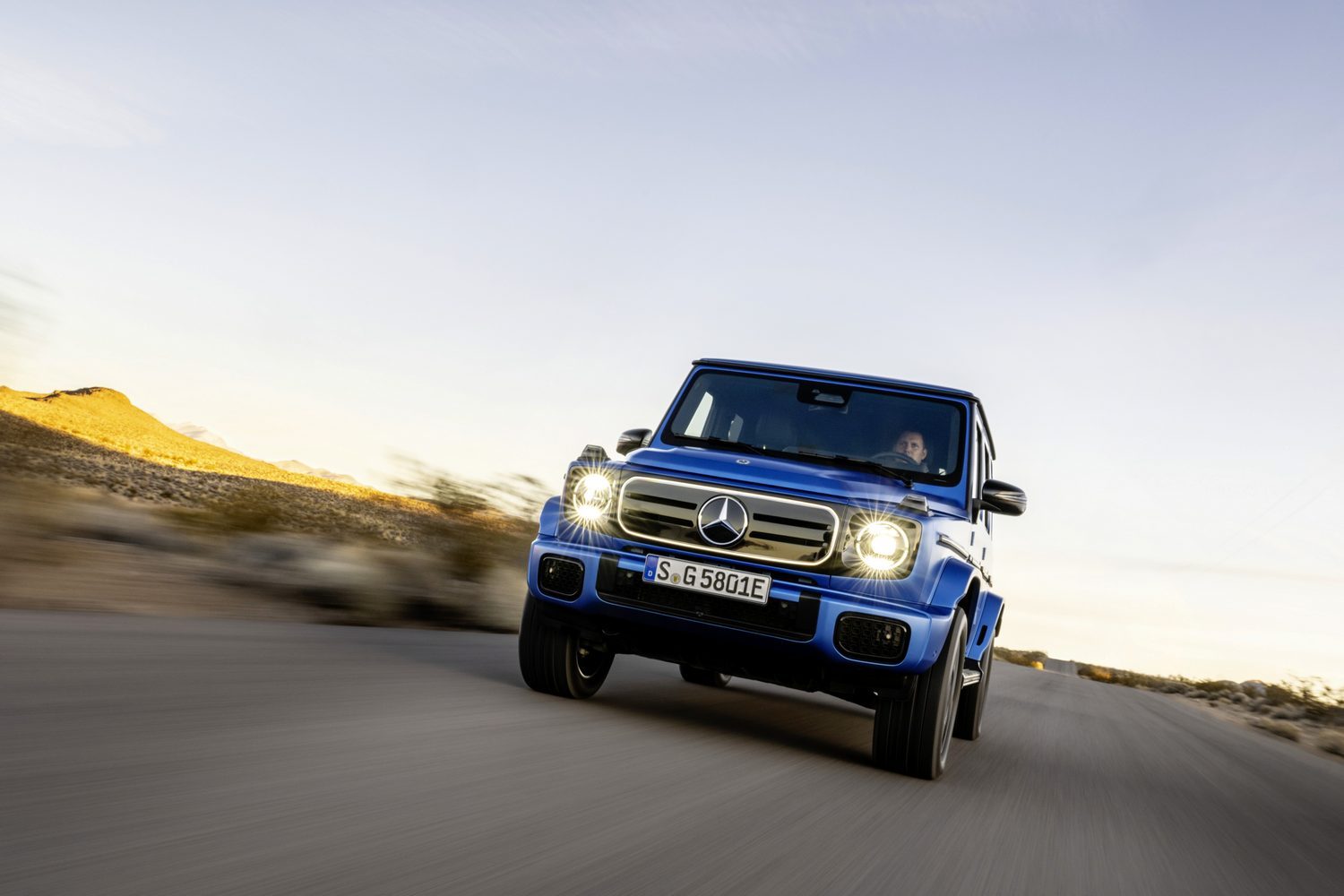
How much does the electric Mercedes G-Class cost in Ireland?
While the G 580 is the most affordable version of the G-Class sold in Ireland, that’s not saying much, and it’s not usefully cheaper to buy than the G 450 d. Prices start at €228,705, which is for the highly specified First Edition before options, while the G 450 d costs from €232,295. Nonetheless, the electric model comes with much lower running costs than any other variant and yet delivers far more performance than the diesel G-Class, more in line with the range-topping AMG G 63. Of course, the G 580 doesn’t come with that car’s outrageous V8 exhaust note, no matter what Mercedes says about its “G-Roar” synthesised sound system...
The reasons you’d buy an electric Mercedes G-Class
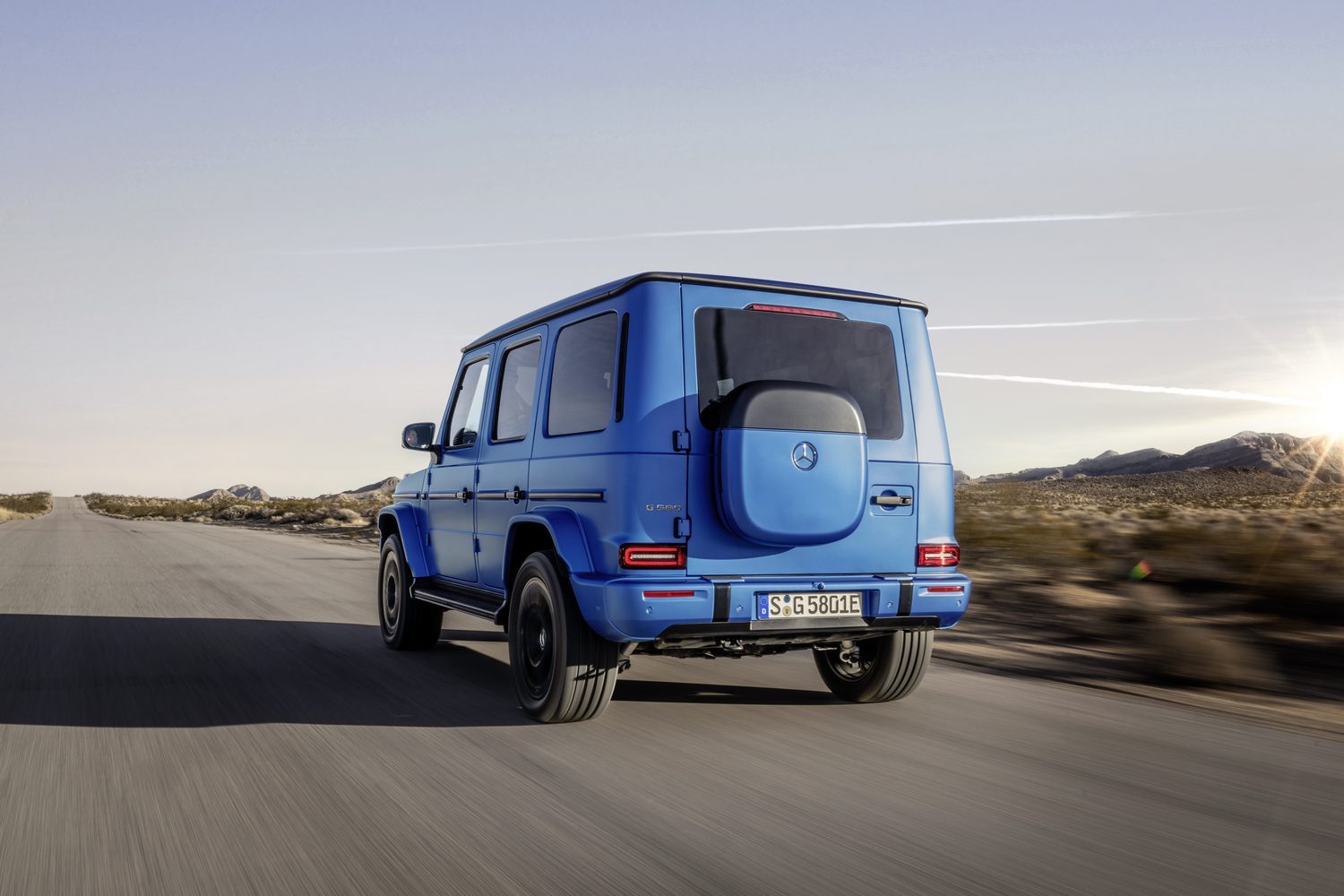
If you love the iconic looks of the G-Wagen, and you’re willing to pay for those but can’t stomach the running costs of the petrol and diesel versions, this G 580 could be for you. It delivers huge performance and is far more talented off road than most people will ever need, but we suspect all that matters a lot less than the image. In which case the G-Class is (a little) more affordable than before.
Ask us anything about the electric Mercedes G-Class
If there’s anything about the Mercedes G-Wagen we’ve not covered, or you’d like advice in choosing between it and other cars, you can avail of our (completely free) expert advice service via the Ask Us Anything page.
























